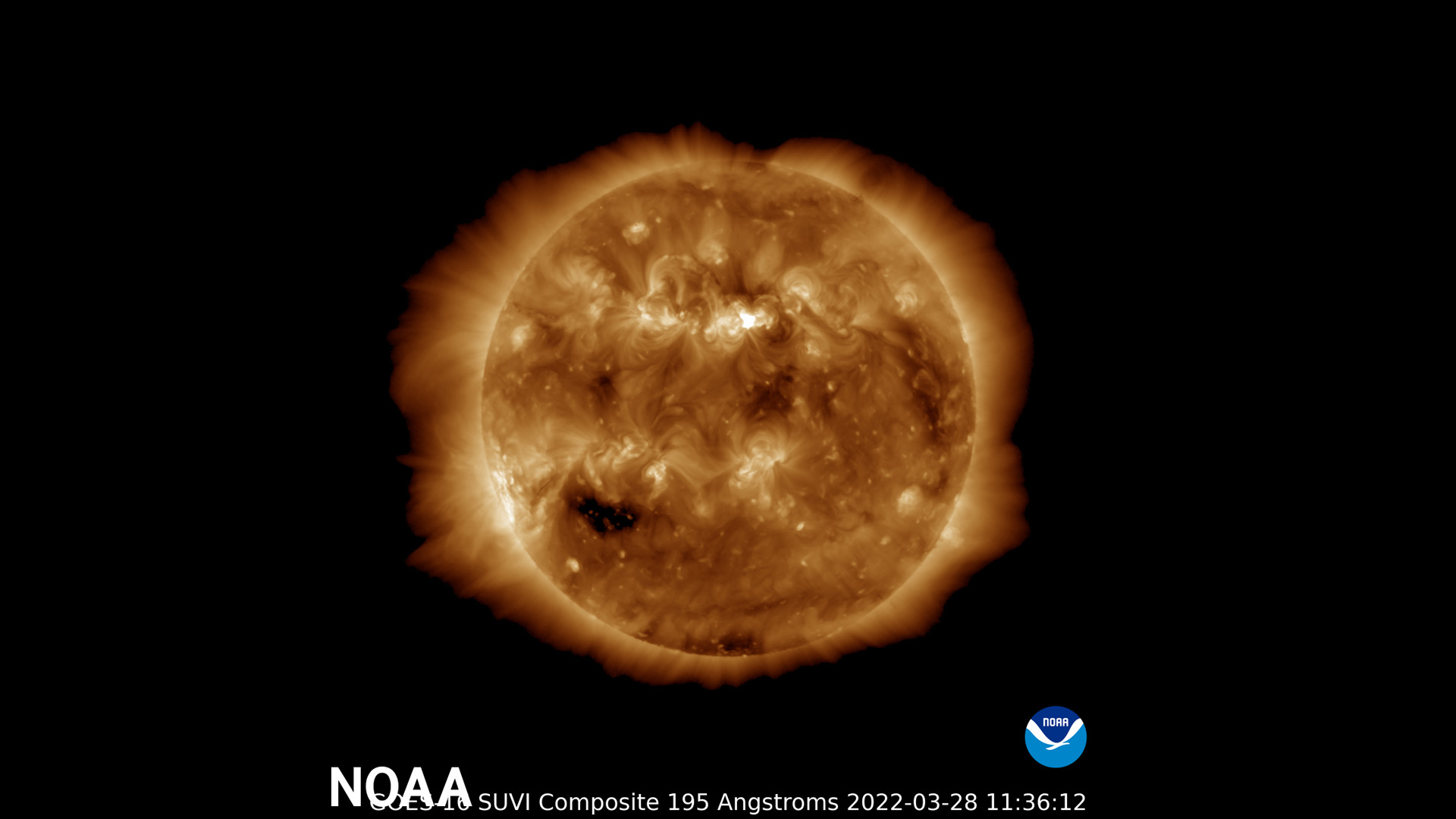Earth braces for solar storm, potential aurora displays
Auroras can be visible as far south as Pennsylvania.

A powerful solar storm is set to hit Earth on Thursday (March 31) with spectacular aurora displays accompanying it after the sun fired nearly 20 flares from a single sunspot in just two days.
The U.S. National Oceanic and Atmospheric Administration (NOAA) warned that two coronal mass ejections (CMEs), spat out from the overactive sunspot AR2975, on Monday (March 28), are heading toward our planet and might trigger a geomagnetic storm rated as G3 on NOAA's five-point scale.
CMEs are huge expulsions of magnetized particles released from the sun's upper atmosphere, the corona. If those charged clouds hit Earth, they can wreak havoc with the planet's magnetic field, causing disruptions to satellites, electric grids and telecommunication networks.
A G3-level solar storm, NOAA said in a statement, is unlikely to have serious impacts on infrastructure. However, it might trigger stunning aurora displays that could be visible from locations more distant from the poles than regions where auroras are usually seen.
Related: Where to see the northern lights: 2022 aurora borealis guide
"Auroras for this storm may be visible, if the weather conditions are favorable, as far south as Pennsylvania to Iowa to Oregon and points north," NOAA said in the statement.
Since Earth's magnetic field is the weakest above the poles, solar particles penetrate much deeper into the planet's atmosphere in those regions. The interaction between the charged solar particles and particles in Earth's atmosphere then triggers the spectacular polar light displays. During powerful solar storms, these areas where auroras occur, also known as auroral ovals, expand farther away from the poles.
Get the Space.com Newsletter
Breaking space news, the latest updates on rocket launches, skywatching events and more!
The U.K.'s national weather forecaster Met Office said in a statement that auroras could be visible from Scotland and Northern Ireland on Thursday (March 31). In the Southern Hemisphere, the aurora oval could expand up to 55 degrees latitude, just south of New Zealand and the southern tip of South America.
NOAA has issued a Geomagnetic Storm Watch through Friday (April 1). A minor (G1) alert is in place for Wednesday (March 30), which will increase to moderate (G2) as the storm arrives.
The Met Office expects additional moderate-class solar flares could occur in the upcoming days.
The solar storm and associated phenomena are tied to the sun's currently increasing activity as part of what scientists call solar cycle 25. The sun's activity fluctuates on an 11-year cycle, which had been at its minimum level of activity in the past years. Scientists predict that the solar cycle will hit its maximum in 2025; sunspots, CMEs and solar storms are likely to continue increasing in frequency throughout the coming years.
Follow Tereza Pultarova on Twitter @TerezaPultarova. Follow us on Twitter @Spacedotcom and on Facebook.
Join our Space Forums to keep talking space on the latest missions, night sky and more! And if you have a news tip, correction or comment, let us know at: community@space.com.

Tereza is a London-based science and technology journalist, aspiring fiction writer and amateur gymnast. Originally from Prague, the Czech Republic, she spent the first seven years of her career working as a reporter, script-writer and presenter for various TV programmes of the Czech Public Service Television. She later took a career break to pursue further education and added a Master's in Science from the International Space University, France, to her Bachelor's in Journalism and Master's in Cultural Anthropology from Prague's Charles University. She worked as a reporter at the Engineering and Technology magazine, freelanced for a range of publications including Live Science, Space.com, Professional Engineering, Via Satellite and Space News and served as a maternity cover science editor at the European Space Agency.









